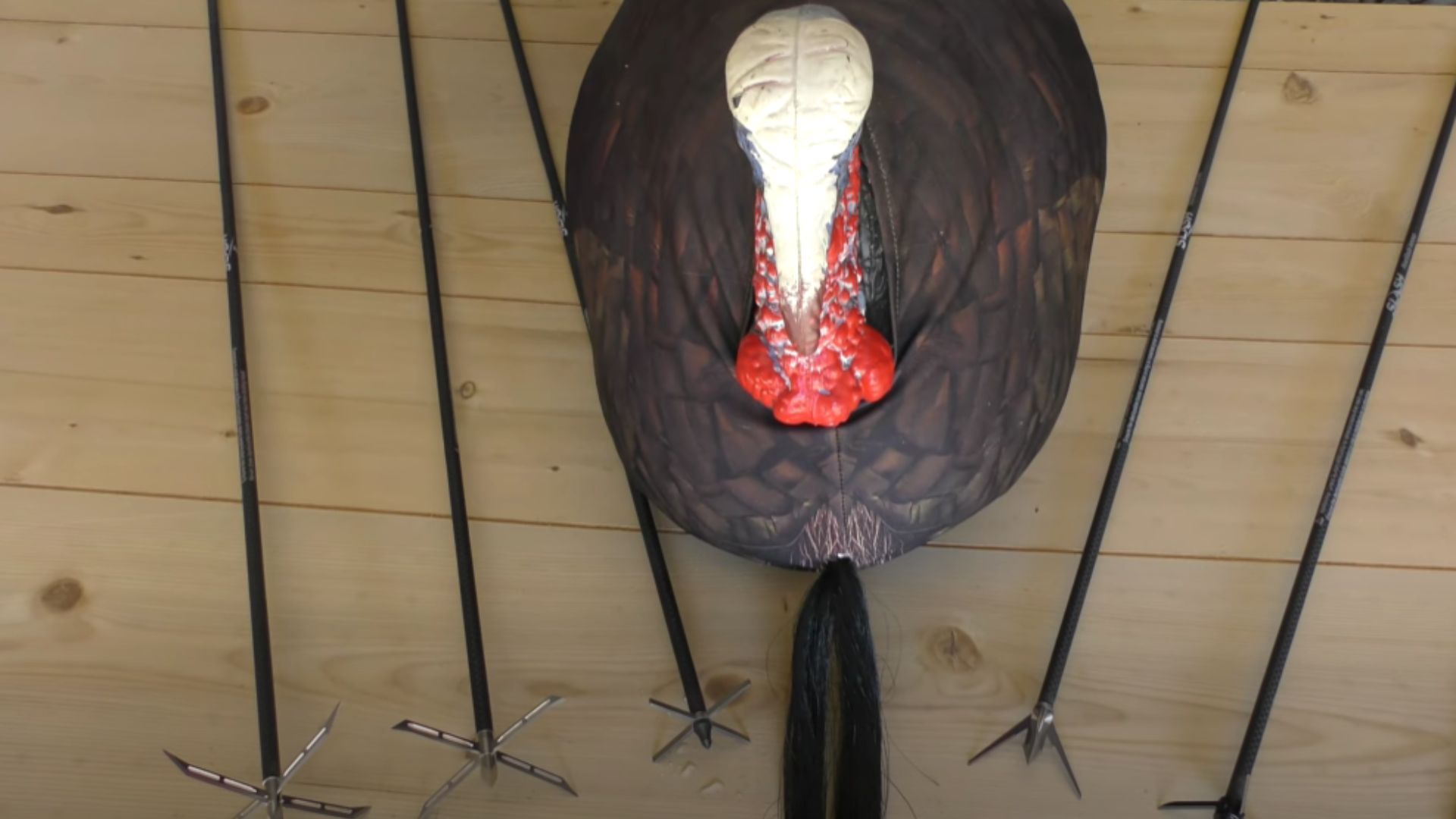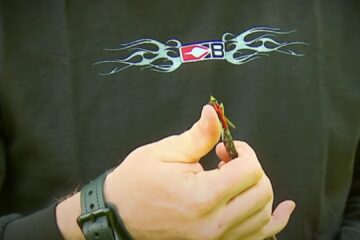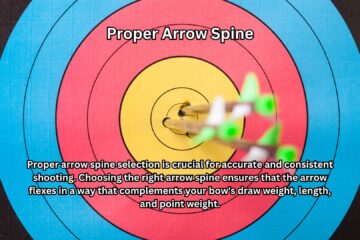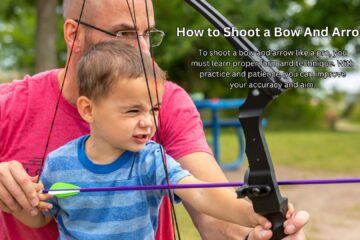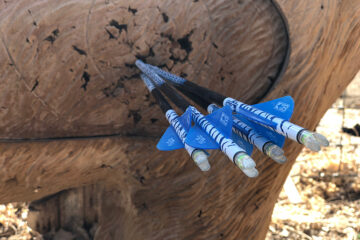Bowhunting turkey requires skill, stealth, and precision for a successful hunt. This article explores essential tips and strategies for bowhunters targeting wild turkeys, including scouting, concealment techniques, shot placement, and calling techniques to enhance your hunting success.
Hunting turkeys with a bow can be challenging due to their keen senses, so effective preparation and execution are crucial. By understanding turkey behavior, identifying prime hunting locations, and utilizing effective calling techniques, bowhunters can increase their chances of a successful harvest.
Additionally, adopting proper concealment strategies and ensuring accurate shot placement are essential for a clean and ethical kill. Whether you are a seasoned bowhunter or a beginner, these tips will help you improve your turkey hunting skills and increase your chances of a rewarding and exhilarating bowhunting experience.
Essential Gear For A Successful Bowhunt
Gear up for a successful turkey bowhunt with essential equipment that maximizes your chances of a fruitful hunt. From a reliable bow and arrows to camouflage clothing and calls, these tools are crucial for an efficient and rewarding turkey hunting experience.
Bowhunting turkey is an exhilarating and challenging sport that requires the right gear to achieve success. Whether you’re a seasoned bowhunter or new to the sport, having the essential equipment is crucial for a successful hunt.
In this section, we will explore three key components of your gear setup: Choosing the Right Bow and Arrows, Optics and Rangefinders: Enhancing Your Accuracy, and Camouflage Clothing: Blending in with the Surroundings.
Choosing The Right Bow And Arrows:
- Bow selection: Choosing the right bow is paramount in bowhunting turkey. Consider factors such as draw weight, draw length, and overall bow performance to ensure accuracy and ease of use.
- Arrow selection: Select arrows that are specifically designed for bowhunting turkey. Look for features like broadhead compatibility, appropriate length and stiffness, and high-quality materials for optimal performance.
- Broadheads: Invest in broadheads that are specifically designed for turkey hunting. Choose between fixed-blade or mechanical broadheads based on your preference and local hunting regulations.
Optics And Rangefinders: Enhancing Your Accuracy:
- Binoculars: A good pair of binoculars is essential for scouting and assessing your surroundings. Look for lightweight, compact options that offer clear optics for maximum visibility.
- Rangefinders: Accurate range estimation is crucial for an effective shot. Invest in a reliable rangefinder to determine distances accurately, ensuring your shots are precise and humane.
Camouflage Clothing: Blending In With The Surroundings:
- Camouflage pattern: Choose camo clothing with patterns that match the environment you’ll be hunting in. Opt for patterns that mimic the turkey’s natural habitat and blend you seamlessly into your surroundings.
- Layering: Layering your clothing allows you to adjust your attire to different weather conditions. Choose moisture-wicking base layers, insulating mid-layers, and a waterproof outer layer to stay comfortable throughout your hunt.
- Head-to-toe coverage: Ensure your camouflage clothing covers your entire body, including face mask, gloves, and boots. Turkeys have excellent eyesight, so minimizing any exposed skin is crucial to avoid detection.
Remember, having the right gear is just one part of a successful bowhunt. Developing your skills, understanding turkey behavior, and utilizing effective hunting strategies are equally important. So, gear up properly, practice your shot, and get ready to embark on an unforgettable bowhunting adventure in pursuit of the elusive turkey.
Deciphering Turkey’s Behavior And Habitat
Discover the secrets to bowhunting Turkey by deciphering their behavior and habitat. Learn effective strategies for a successful and thrilling hunting experience.
As a bowhunter, understanding turkey behavior and habitat is crucial for a successful hunt. By deciphering their roosting habits, identifying feeding and strutting areas, and evaluating their travel patterns, you can enhance your scouting techniques and increase your chances of a productive hunt.
Understanding Turkey Roosting Habits:
- Turkeys prefer to roost in tall and mature trees, such as oak, hickory, or pine trees.
- They choose roosting sites near open areas, such as fields or meadows, where they can have a clear view of their surroundings.
- Roost sites are often located on slopes or ridges, providing a vantage point for turkeys to observe potential predators.
- Turkeys tend to roost in communal groups for safety, so locating multiple roosting sites can lead to better hunting opportunities.
- Roosting sites are often used consistently, so once you find a roost, you can return to it in future hunts.
Identifying Feeding And Strutting Areas:
- Turkeys rely on various food sources, including nuts, fruits, seeds, insects, and even small reptiles or amphibians.
- Look for feeding areas near water sources, such as creeks or ponds, as turkeys require regular access to water.
- Turkeys also prefer open areas with a mix of grasses and low shrubs, providing ample foraging opportunities.
- Strutting areas are typically found in fields or clearings, where turkeys display and courtship behaviors take place.
- Look for signs of scratching and feeding, as well as feathers or droppings, to pinpoint active feeding and strutting areas.
Evaluating Travel Patterns And Scouting Techniques:
- Turkeys follow established travel patterns between roosting, feeding, and strutting areas, creating predictable routes.
- Determine these travel patterns by mapping out turkey tracks, feathers, droppings, and other signs along trails or game paths.
- Pay attention to terrain features such as ridges, valleys, or natural funnels that turkeys might use as travel corridors.
- Utilize game cameras or conduct scouting trips during different times of the day to observe turkey movement and behavior.
- By analyzing their travel patterns, you can strategically position yourself for a hunting ambush or plan effective setups for decoys.
Deciphering turkey behavior and habitat is a key aspect of successful bowhunting. By understanding their roosting habits, identifying feeding and strutting areas, and evaluating travel patterns, you can improve your scouting techniques and increase your chances of a turkey hunting triumph.
Setting Up The Perfect Turkey Hunting Spot
Find out how to create the perfect hunting spot for bowhunting turkeys. Learn effective strategies and techniques for setting up that will increase your chances of success.
Selecting The Ideal Hunting Location
Consider the following factors when choosing your hunting location:
- Turkey Habitats: Look for areas with a high turkey population, such as forests, fields, or farmlands.
- Food and Water Sources: Identify locations with abundant food sources like acorns, berries, or open fields where turkeys can forage. Nearby water sources like creeks or ponds are also attractive to turkeys.
- Roosting Areas: Find areas with mature trees or wooded areas where turkeys often roost at night.
- Hunting Pressure: Avoid areas with heavy hunting pressure as it can spook the turkeys and make them wary.
- Accessibility: Ensure the location is easily accessible, allowing you to set up decoys, blinds, and move around without disturbing the turkeys.
Effective Use Of Decoys And Calls
Utilize decoys and calls effectively by following these tips:
- Decoy Placement: Set up the decoy in an open area where it can be easily seen by approaching turkeys, but make sure it’s within shooting range.
- Realism: Choose realistic decoys that resemble a turkey’s appearance, posture, and coloring to attract curious birds.
- Strategic Calling: Know the different turkey calls and when to use them. Start with soft yelps or purrs to imitate a calm turkey and gradually increase the intensity to simulate an excited bird.
- Natural Rhythm: Mimic the natural rhythm of turkey vocalizations, including pauses and variations, to sound more convincing.
- Matching the Scenario: Use different calls according to the hunting situation, such as locating calls to find nearby turkeys or soft yelps to bring them closer.
Utilizing Ground Blinds For Concealment
Ground blinds provide excellent concealment and improve your chances of success:
- Choosing the Right Blind: Opt for a portable ground blind that offers camouflage patterns matching the hunting environment and blends well with the surroundings.
- Proper Setup: Position the blind in an area with good turkey activity, keeping it hidden among natural cover like bushes or trees.
- Scent Control: Take precautions to minimize human scent by using scent-eliminating sprays or wearing scent-blocking clothing.
- 360-Degree Coverage: Select a blind with large windows or multiple shooting ports for a broader field of view and aiming flexibility.
- Quiet Entry and Exit: Plan a stealthy route to approach and leave the blind to avoid alerting nearby turkeys.
- Patience and Stillness: Remain motionless inside the blind, allowing turkeys to approach without detecting any sudden movements.
Remember, success in turkey hunting depends on careful selection of the hunting location, using decoys and calling techniques effectively, and utilizing ground blinds for concealment. By applying these strategies, you’ll increase your chances of a rewarding and thrilling bowhunting experience.
Perfecting Your Shot Placement
Perfecting your shot placement is crucial in bowhunting turkey. Proper aim and accuracy are key to effectively taking down your target. Mastering this skill will enhance your success in the field.
Bowhunting turkey requires precision and accuracy to ensure a quick and humane harvest. One crucial aspect of achieving this is perfecting your shot placement. By understanding shot angles and distance, developing consistent shooting form, and selecting the right broadhead, you can increase your chances of making a clean and ethical shot.
Let’s dive into each of these factors in detail.
Evaluating Shot Angles And Distance
- Broadside Shot: One of the most common shot angles in turkey hunting is when the bird is broadside. This means it presents a side view, offering a larger target area. Aim for the vital area, which is a few inches higher than the base of the turkey’s neck.
- Quartering-Away Shot: When a turkey is quartering away from you, carefully aim for the area just in front of the turkey’s legs on the opposite side. This shot angle allows for better penetration of the vitals.
- Head Shot: Aiming for the turkey’s head can be effective if you are confident in your shooting accuracy. Always aim at the center of the turkey’s head, just above the wattle.
- Distance: As a bowhunter, it’s crucial to be aware of your effective shooting range. Practice consistently at different distances to understand your limits and capabilities. For most hunters, a maximum effective range of 30 yards is advisable.
Developing Consistent Shooting Form
- Stance: Maintain a balanced and stable stance by standing with your feet shoulder-width apart. Distribute your weight evenly.
- Grip: Grip the bow with a relaxed, yet firm, grip. Avoid gripping too tightly, as it may cause your shots to go off target.
- Anchor Point: Develop a consistent anchor point by consistently drawing the bowstring to the same location on your face during each shot. This allows for better accuracy.
- Follow-Through: After releasing the arrow, maintain your bow arm in position and continue aiming at the target. This helps ensure proper follow-through and accuracy.
- Practice: Regularly practice shooting from different positions, distances, and angles to enhance your shooting skills and build muscle memory.
Understanding Effective Broadhead Selection
- Cutting Diameter: Consider the broadhead’s cutting diameter. A wider cutting diameter can increase the chances of hitting vital organs and ensuring a quick, ethical kill.
- Mechanical vs. Fixed Blade: Mechanical broadheads deploy upon impact, offering larger cutting areas. Fixed blade broadheads are known for their durability and penetration power. Understand the advantages and disadvantages of each type before making a selection.
- Weight: Choose a broadhead that complements your bow and arrow setup. Consider the weight of the broadhead and ensure it matches the specifications of your equipment.
- Recommendations: Seek recommendations from experienced bowhunters or consult with professionals at your local archery shop to find broadheads that have proven effective for turkey hunting.
Perfecting your shot placement is essential for a successful turkey hunt. By evaluating shot angles and distance, developing consistent shooting form, and understanding effective broadhead selection, you can enhance your accuracy, increase your harvest success rate, and demonstrate a commitment to ethical hunting practices.
Understanding Turkey Hunting Seasons And Bag Limits
Turkey hunting seasons and bag limits for bowhunters are vital for understanding the regulations and opportunities. This guide provides valuable information on how to navigate the seasons and make the most of your bowhunting experience.
Turkey hunting is a thrilling and challenging sport enjoyed by many outdoor enthusiasts. To ensure the sustainability of turkey populations and promote responsible hunting practices, it is essential to understand the hunting seasons and bag limits set by each state.
By familiarizing yourself with specific regulations, identifying special hunts and permit requirements, and comprehending turkey tagging and reporting procedures, you can enjoy a successful and ethical turkey hunting experience. Let’s delve into each aspect in detail.
Familiarizing Yourself With State-Specific Regulations:
Understanding the regulations specific to your state is crucial for legal and ethical turkey hunting. Here are key points to consider:
- Hunting Seasons: Different states have varying hunting seasons, which dictate when it is permissible to hunt turkeys. Ensure you are familiar with the dates established by your state’s wildlife agency.
- Bag Limits: Bag limits refer to the number of turkeys an individual hunter is allowed to harvest during a particular season. It is important to know and adhere to these limits to prevent overharvesting and maintain turkey populations.
- Licensing and Permits: Obtain the necessary hunting licenses and permits required by your state. These may include general hunting licenses, turkey tags, and special permits for certain areas or types of hunting (such as public land or archery-only hunts).
Identifying Special Hunts And Permit Requirements:
Some states offer special hunts and require additional permits for certain hunting scenarios. Here are a few examples:
- Youth Hunts: Many states provide special hunting opportunities for young hunters, enabling them to experience turkey hunting under specific conditions. Make sure to check if your state offers youth hunts and the age restrictions that apply.
- Disability Accommodations: Some states offer accommodations for hunters with disabilities, providing accessible blinds, mobility aids, or other assistance. Be aware of any special requirements or permits for disabled hunters.
- Limited Entry Hunts: These hunts typically have restricted access and require hunters to obtain permits through a lottery or application process. If you are interested in participating in limited-entry hunts, research the specific requirements and application deadlines.
Comprehending Turkey Tagging And Reporting Procedures:
Properly tagging and reporting the harvest of a turkey is essential for wildlife management and data collection. Follow these guidelines:
- Tagging: After successfully harvesting a turkey, promptly attach the required tag to the bird as specified by your state regulations. This tag serves as proof of legal harvest and assists with data collection efforts.
- Reporting: Some states require hunters to report their turkey harvest, even if they were unsuccessful. This information helps biologists and wildlife agencies monitor population trends and make informed management decisions. Familiarize yourself with your state’s reporting methods and deadlines.
By understanding state-specific regulations, identifying special hunts and permit requirements, as well as comprehending turkey tagging and reporting procedures, you can ensure a safe, ethical, and enjoyable turkey hunting experience. Remember to always follow the guidelines set by your state’s wildlife agency and respect the environment and wildlife while you pursue this exciting outdoor activity.
Safety Measures For Bowhunting Turkey
When bowhunting turkey, it is crucial to prioritize safety measures to ensure a successful and secure hunting experience. Implementing safety habits such as wearing protective gear, practicing proper shooting techniques, and being aware of your surroundings can help prevent accidents and injuries.
Bowhunting turkey can be an exhilarating and rewarding experience, but it’s crucial to prioritize safety while out in the field. From protecting yourself against accidental falls and injuries to communicating effectively with other hunters, and utilizing personal protective gear, following safety measures is paramount.
To ensure a safe and enjoyable bowhunting adventure, consider the following:
Protecting Yourself From Accidental Falls And Injuries:
- Always maintain proper footing and be cautious of uneven terrain.
- Avoid rushing or taking unnecessary risks while navigating through the hunting area.
- Watch out for tripping hazards, such as roots, branches, or rocks in your path.
- Carry a reliable climbing harness and use it to secure yourself when hunting from elevated positions.
- Take frequent breaks to rest and prevent fatigue, as it can impact your balance and coordination.
Communicating Effectively With Other Hunters:
- Use hand signals or non-verbal cues to communicate with fellow hunters silently.
- Establish a clear and consistent communication plan before heading out to ensure everyone is on the same page.
- Stay connected with your hunting partners through two-way radios or cellphone signals, if available.
- Always identify your target before taking a shot, and avoid shooting near others to prevent accidents.
Utilizing Personal Protective Gear:
- Wear a blaze orange camouflage vest or hat to promote visibility and ensure other hunters can easily distinguish you from game animals.
- Put on quality protective eyewear to shield your eyes from debris, branches, or twigs while in pursuit.
- Use ear protection, such as earmuffs or earplugs, to safeguard against loud noises, especially when firing your bow.
- Wear appropriate clothing and footwear to ensure comfort and minimize the risk of injury or distraction.
By adhering to these essential safety measures, you can have peace of mind while bowhunting turkey. Remember, safety should always be your top priority as you embrace the excitement and challenges that come with this thrilling outdoor activity. Happy hunting!
Honing Your Bowhunting Skills: Practice And Preparation
Prepare yourself for a successful turkey bowhunting experience by focusing on practice and preparation. Enhance your skills and aim by dedicating time to honing your bowhunting techniques.
Bowhunting requires skill, precision, and preparation. To become an effective bowhunter, you need to dedicate time to practice and hone your skills. This will not only improve your accuracy but also enhance your ability to mimic realistic hunting scenarios and master stealth techniques.
In this section, we will explore how to establish a routine practice schedule, practice realistic hunting scenarios, and perfect your stealth and camouflage techniques.
Establishing A Routine Practice Schedule
Regular practice is the key to becoming an accomplished bowhunter. By establishing a routine practice schedule, you can ensure consistent improvement in your skills. Here are some points to consider:
- Dedicate a specific time slot each day or week solely for bowhunting practice.
- Set realistic goals for each practice session to keep yourself motivated.
- Focus on both accuracy and form during your practice drills.
- Vary the distance of your target to simulate different hunting situations.
- Incorporate challenging shooting positions, such as kneeling or sitting, to prepare for real-life scenarios.
Practicing Realistic Hunting Scenarios
Practicing realistic hunting scenarios will help you develop the instinctive shooting skills required in the field. Consider the following tips:
- Set up lifelike targets that resemble the size, shape, and color of turkeys.
- Practice shooting from different angles and positions, such as treestands or blinds.
- Simulate hunting conditions by introducing obstacles, distractions, and time constraints.
- Mimic the sounds of a turkey to test your ability to maintain focus and shoot accurately.
- Utilize 3D archery courses or create mock hunting scenarios to enhance your skills.
Perfecting Stealth And Camouflage Techniques
Mastering stealth and camouflage techniques is crucial for bowhunting success. Here’s how you can improve your ability to remain undetected:
- Invest in gear specifically designed for bowhunting, including camouflaged clothing and face masks.
- Learn to move silently and slowly, minimizing noise and sudden movements.
- Familiarize yourself with the terrain and practice navigating quietly through your hunting area.
- Use natural cover, such as bushes or trees, to break up your silhouette and blend into the surroundings.
- Experiment with scent control methods to minimize human odor, which can alert turkeys to your presence.
By dedicating time to practice, focusing on realistic scenarios, and perfecting your stealth and camouflage techniques, you will significantly enhance your bowhunting skills. Remember, practice makes perfect, and the more you immerse yourself in the art of bowhunting, the greater your chances of a successful turkey hunt.
Field Dressing Techniques For Bowhunted Turkey
Discover effective field dressing techniques for bowhunted turkeys to ensure proper cleaning and processing. Master the skill of bowhunting turkeys with these practical tips.
As bowhunting continues to gain popularity among outdoor enthusiasts, it’s essential to know proper field dressing techniques for a successful hunt. Field dressing involves ensuring proper bleeding and feather removal, handling and preserving the turkey meat, and preventing disease transmission during the process.
In this section, we will discuss each of these aspects to help you make the most out of your bowhunting experience.
Ensuring Proper Bleeding And Feather Removal:
To ensure the quality of the meat and make the field dressing process easier, it is crucial to follow these steps for proper bleeding and feather removal:
- Start by securing the turkey’s legs and wings to prevent any movement.
- With a sharp knife, make a small incision just below the breastbone, ensuring not to pierce the intestines.
- Cut through the windpipe and jugular vein to enable proper bleeding.
- Allow the turkey to bleed out by hanging it upside down for a few minutes.
- After bleeding, carefully pluck the feathers, taking care not to damage the skin.
- Use a feather removal tool or pliers to aid in the process, if necessary.
- Inspect the bird thoroughly, ensuring all feathers are removed before moving on to the next step.
Handling And Preserving The Turkey Meat:
Proper handling and preservation techniques are vital to maintain the taste and quality of the turkey meat. Follow these guidelines to ensure optimal results:
- After field dressing, rinse the turkey thoroughly with cold water to remove any debris or blood.
- Pat the bird dry with a clean cloth or paper towel.
- If you plan to transport the turkey, place it in a cool and insulated container or cooler with ice packs to maintain freshness.
- Once you reach your destination, it’s crucial to dress and refrigerate or freeze the turkey as soon as possible.
- If refrigerating, store the bird at a temperature below 40°F (4°C).
- When freezing, wrap the turkey tightly in plastic wrap and place it in a freezer bag to prevent freezer burn.
- Label the packaging with the date and use within the recommended storage time for best quality.
Preventing Disease Transmission During Field Dressing:
To ensure your safety and prevent the transmission of diseases, it is essential to follow these precautions while field dressing a turkey:
- Always wear disposable gloves to protect yourself from potential pathogens.
- Avoid contact with the turkey’s internal organs, especially if they show signs of disease or abnormalities.
- Dispose of any organs that appear abnormal or smell offensively.
- Clean and disinfect all tools, knives, and work surfaces thoroughly after field dressing.
- Wash your hands with soap and water for at least 20 seconds after completing the process.
- Consider using an antibacterial solution or hand sanitizer if soap and water are unavailable.
By adhering to proper bleeding and feather removal techniques, handling and preserving the turkey meat correctly, and taking necessary precautions to prevent disease transmission, you can enhance your bowhunting experience and enjoy delicious turkey meals. Remember, practicing responsible and ethical field dressing techniques is essential for both your safety and the welfare of the game.
Processing And Cooking Your Bowhunted Turkey
Learn how to process and cook your bowhunted turkey for a delicious meal. Discover tips and techniques for maximizing flavor and ensuring a mouthwatering dining experience.
Delicious Turkey Recipes: From Traditional To Gourmet
- Roasted Turkey with Herb Butter: This recipe involves rubbing the turkey with a flavorful herb butter mixture and roasting it to perfection. The result is a juicy and aromatic turkey that will impress your guests.
- Smoked Turkey: Smoking adds a unique smoky flavor to the turkey meat, making it incredibly delicious. The slow cooking process ensures a moist and tender bird that will have everyone coming back for seconds.
- Deep-Fried Turkey: Crispy on the outside and moist on the inside, deep-fried turkey is a favorite for many. With the right technique, you can achieve a succulent bird with a beautiful golden brown skin.
- Turkey Pot Pie: Transform your leftover turkey into a comforting and satisfying pot pie. Packed with vegetables, a rich gravy, and a flaky crust, this recipe is sure to warm your soul.
- Turkey Chili: Give your turkey leftovers a spicy twist by making a hearty turkey chili. Loaded with beans, tomatoes, and spices, it’s a flavorful way to enjoy your bowhunted turkey meat.
Expert Tips For Moist And Tender Turkey Meat
- Brining: Brining involves soaking the turkey in a mixture of salt, sugar, and spices before cooking. This process helps the meat retain moisture, resulting in a juicier and more flavorful turkey.
- Proper Cooking Temperature: To ensure moist and tender turkey meat, it’s crucial to cook the bird to the correct internal temperature. Use a meat thermometer to ensure that the thickest part of the turkey reaches 165°F (74°C).
- Resting Period: After removing the turkey from the oven, let it rest for about 20-30 minutes before carving. This allows the juices to redistribute, resulting in tender and succulent meat.
- Basting: Basting the turkey with melted butter or pan drippings throughout the cooking process helps keep the meat moist and adds flavor to the skin.
- Using a Meat Injector: Injecting marinades or seasoned broth into the turkey prior to cooking can enhance the flavor and moisture of the meat.
Maximizing Use Of Turkey Parts: Bones, Skin, And Organs
- Making Turkey Stock: Don’t let the turkey bones go to waste. Simmer them with vegetables and herbs to create a rich and flavorful turkey stock that can be used as a base for soups, stews, and sauces.
- Crispy Turkey Skin: Remove the skin from the turkey and bake it in the oven until crispy. Sprinkle with your favorite spices or seasonings for a delicious and crunchy snack.
- Giblets and Offal: Utilize the turkey’s giblets and offal to enhance the flavor of gravies, stuffings, or even as separate dishes. From giblet gravy to sautéed livers, there’s no limit to the possibilities.
- Dog Treats: If you have a furry friend, consider dehydrating the turkey skin to create homemade dog treats. It’s a healthy and tasty snack option for your four-legged companion.
- Composting: Don’t forget about composting! Any food scraps or leftovers from your turkey can be composted to enrich the soil in your garden.
Remember, bowhunting your own turkey is a rewarding experience, and with these tips and recipes, you’ll be able to savor every part of your bowhunted bird. Enjoy the process and experiment with flavors to create your own unique turkey masterpieces!
Frequently Asked Questions Of Bowhunting Turkey
Is It Hard To Bow Hunt Turkey?
Bow hunting turkey can be a challenge due to their keen senses and quick movements.
Do People Bow Hunt For Turkey?
Yes, people do bow hunt for turkey as it is a popular and challenging hunting method.
How Do You Bow Hunt Turkeys?
To bow hunt turkeys, practice your aim and stealth, use camouflage, and aim for the vitals.
How Long To Wait After Shooting A Turkey With A Bow?
After shooting a turkey with a bow, wait for 15-30 minutes before tracking it for a clean kill.
Conclusion
To wrap up, bowhunting turkey is an exhilarating and rewarding sport that requires skill, patience, and careful preparation. By following the tips and techniques outlined you can increase your chances of a successful hunt. Remember to choose the right gear, scout your hunting area, practice your shot placement, and use effective calling techniques.
It’s important to be mindful of safety precautions and to respect the wildlife and environment while out in the field. Bowhunting turkey offers a unique and challenging experience that allows you to connect with nature in a profound way. So grab your bow, hone your skills, and venture out into the woods for an unforgettable adventure.
Happy hunting!

